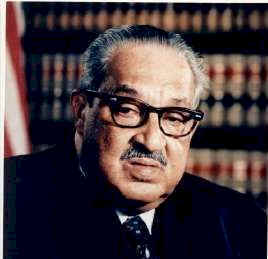|
Clarence Thomas/Anita
Hill
Context
In
1991, after Thurgood Marshall announced that he would retire from the
Supreme Court, President George Bush nominated Clarence Thomas for the
position. Thomas had chaired the Equal Employment Opportunity
Commission (EEOC) from 1982 until 1990, when he was appointed to the
Court of Appeals for the District of Columbia Circuit Court. At
the EEOC, had Thomas worked to end affirmative action and established
himself as a fierce opponent of policies that were generally favored by
unions and civil rights groups.
Controversial
from the start, Thomas's nomination became a media sensation when it was
leaked to the press that law professor Anita Hill was willing to testify
that Thomas had sexually harassed her while she served under him at the
EEOC during the 1980's. After the Senate Judiciary Committee was forced
to reopen the confirmation hearings, several members labeled Hill
a liar and suggested that she suffered from some form of mental
illness. Following days of gavel-to-gavel coverage on every major
television network, the hearings came to a climax when Thomas described
himself as the "victim" of a "high-tech lynching."
In
the end, Thomas was confirmed by a full Senate vote of 52-48.
|


